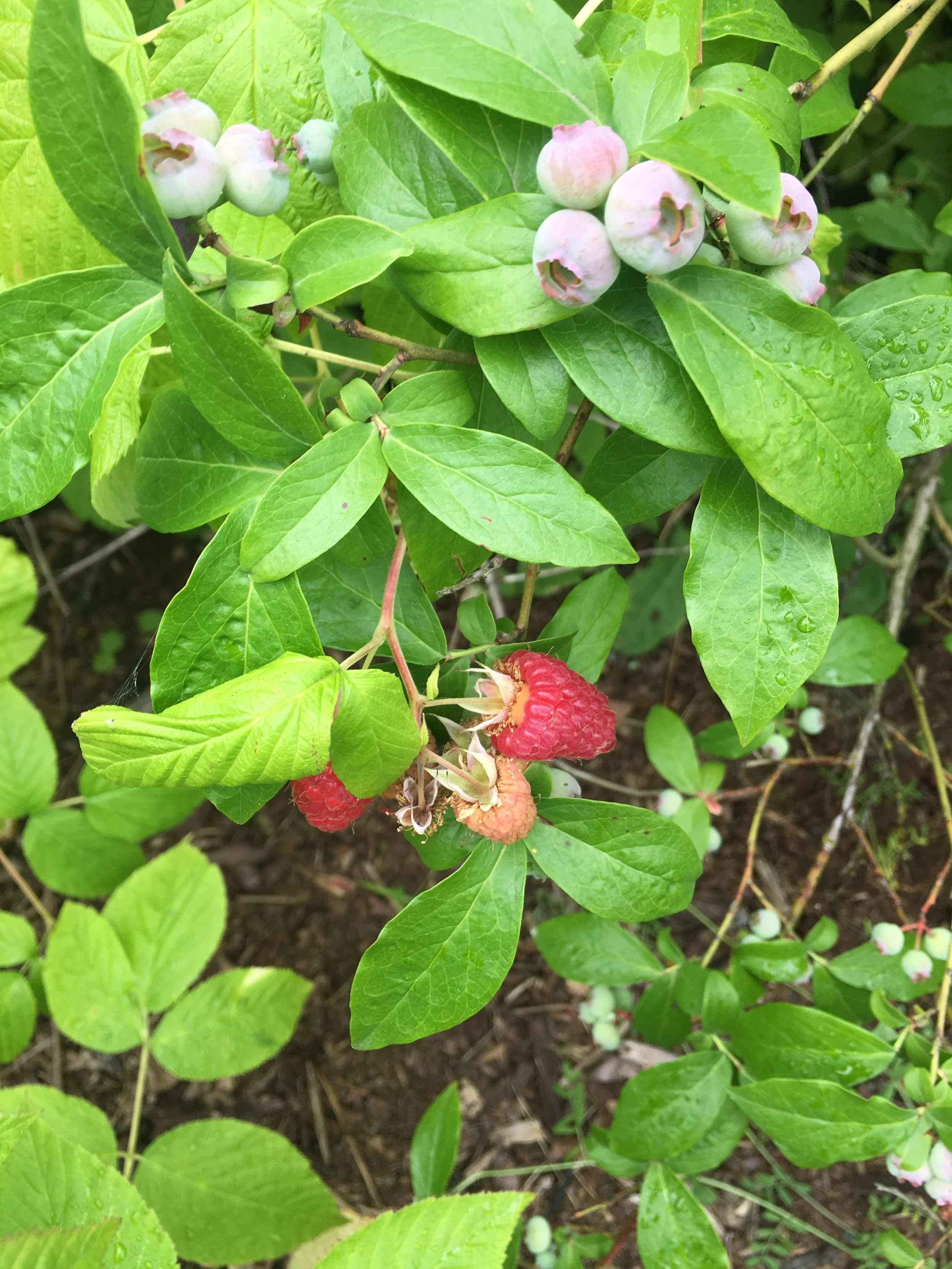I mentioned to my away-on-travels daughter that I had eaten the first salad picked from the garden last night. She was thrilled and wanted photos of the garden, so I obliged. I got low to the green rippled row of romaine, focused in on the filling pea pods, caught the light just right on the thyme, the baby tomatoes, the prickly opening artichoke.
They were lovely photos of a lush vegetable garden, but when she oohed and aahed I realized the photos had lied! I had skipped over the tomato with the bits of blight. I had excluded also the rows of seedlings that hadn't grown, proving my inattention to proper fertilizing, the fact that the peas were supposed to be 6 fee tall but were barely up to my knees, the slug holes in the lettuce leaves, the pots from the nursery still unplanted, the weeds in the path yet unplucked.
Was I a fraud? For honesty, do we need to see the totality of the bad in the whole? Or is it OK to turn a blind eye to the problematic and look at the positive only?
I think it is important to understand that the ugly and guilt-inducing can coexist in our worldview with the beautiful and proud-making, and that one is not more real than the other, not more true. The unattractive- in our gardens, or even in ourselves- do not cancel out the favorable. So, I don't need to feel a fraud with photographing only the lovely and lush. As photographer Richard Avedon said, "All photographs are accurate. None of them is the truth.”
My photos of the fulsome romaine are even more beautiful, more complete if, when viewing them, one fully comprehends what lies outside the frame. The honesty is there, just out of view. So let's have some gratitude for is what is photographed as well as what is left out-- the beauty and the blight, the harvest and the havoc, the salad and the slugs. Let's have gratitude for it all.






